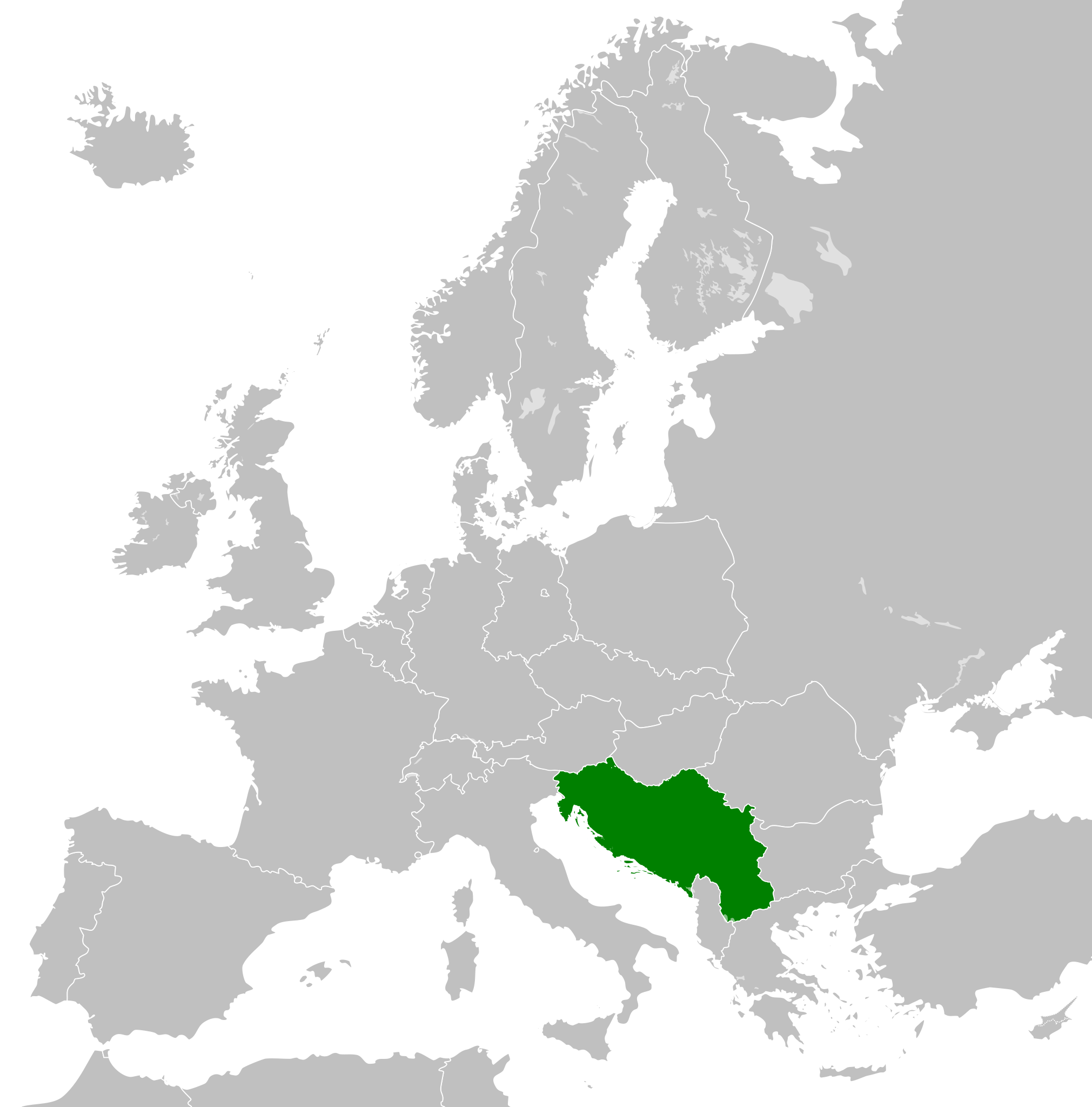More languages
More actions
The Yugoslav Wars were a series of imperialist wars of secession between 1991 and 2001 that destroyed Yugoslavia.
Background
The USA forced Yugoslavia to hold elections in each republic in 1990 without holding federal elections. The CIA and its front groups, including the NED, funded candidates that took power in all republics except Serbia and Montenegro. The USA passed the Foreign Appropriations Act in 1991, sending weapons and military advisors into secessionist republics from Germany and Austria. The EEC (future EU) organized a conference on Yugoslavia in 1991 while excluding the Yugoslav government and called for creating independent republics.[1]:26–27
Slovenia
In June 1991, Slovenia seceded from Yugoslavia one day after Croatia and received recognition from Germany and the Vatican. It began a ten-day war and quickly defeated the Yugoslav army.[1]:28–29
Croatia
Croatia became the first republic to secede in June 1991. The Serbian Autonomous Oblast of Krajina then seceded from Croatia to remain in Yugoslavia. In August 1995, Croatia launched its deadliest offensive and killed thousands of Serb civilians in its invasion of Krajina. US ambassador Peter Galbraith approved this invasion, and NATO planes destroyed Serbian radar and anti-aircraft defenses. According to the Yugoslav constitution, the republic could not secede if it was against the will of a constituent nationality, in this case the Serbs.[1]:28–32
Bosnia
In Bosnia and Herzegovina, fighting broke out between Serbs, Muslims, and Croats. No group made up a majority, but the Muslims were the biggest, making up 41% of the population, and their army was trained by the CIA.[1] In 1990, Islamic fundamentalist Alija Izetbegović became president even though he lost the election. Fikret Abdić, the rightful winner, formed the Autonomous Province of Western Bosnia and fought against Izetbegović. Abdić was able to retake some territory after a Bosnian invasion but eventually had to flee from NATO bombing.[2]
In November 1995, the West partitioned Bosnia into the Bosnian Federation of Muslims and Croats and Republika Srpska for the Serbs. Croatia also attacked Bosnia and tried to create a Croat-only state called Herzeg-Bosnia.[1]:30–32
Macedonia
In 1991, Macedonia seceded from Yugoslavia and came under U.S. occupation.[1]:30 Due to the use of the name "Republic of Macedonia", it was not initially recognized from Greece, beginning the so-called Macedonian naming dispute. [3]
Serbia
Kosovo
The Kosovo Liberation Army began its terrorist attacks in 1996 and sought to create a "Greater Albania" that included parts of Greece, Macedonia, Montenegro, and Serbia. By 1998, it was receiving funding from the CIA and Germany. In the summer of 1998, Yugoslav police and security forces moved to the countryside and began fighting the KLA. Between 800 and 2,000 people died on both sides, mainly in KLA areas. The KLA violated ceasefires multiple times.[4]
In February 1999, while meeting with US officials in Rambouillet, France, Yugoslavia proposed a peace agreement for Kosovo. The proposal included human rights for all citizens, promotion of cultural and linguistic diversity for all nationalities, freedom of media, the return of all displaced citizens to their homes, and a proportional legislature with extra seats for various nationalities. The US rejected this proposal and instead created a plan with complete autonomy for Kosovo and its occupation by NATO troops. The US plan required Yugoslavia to continue giving aid to Kosovo and did not guarantee assistance for Serbian refugees or an end to sanctions.[5]
NATO bombing
At Rambouillet, Yugoslavia agreed to give up control of Kosovo but wanted to change the agreement to keep the FRY's control of its economic and foreign policy and prevent NATO from occupying Kosovo. NATO also proposed another protocol that would give it unlimited access to the FRY's territory, infrastructure, and communication systems. When Yugoslavia refused to become a colony, NATO bombed it from 24 March to 10 June 1999.[5]
The United Nations never approved the bombing, which violated NATO's own charter and the constitutions of the United States and Canada. No NATO pilots died in the bombing, but they killed 2,000 civilians[6] (including over 300 Albanians, whom they claimed to be protecting)[7] and wounded 6,000.[6] The bombing drove tens of thousands of Albanians and at least 70,000 Serbs from their homes.[7] NATO destroyed 164 state-owned factories but not a single private factory. Buildings that advertised for Western corporations survived untouched.[8]
Further reading
See also
References
- ↑ 1.0 1.1 1.2 1.3 1.4 1.5 Michael Parenti (2000). To Kill a Nation: 'Divide and Conquer'. [PDF] Verso.
- ↑ Michael Parenti (2000). To Kill a Nation: 'Bosnia: New Colonies' (pp. 50–52). [PDF] Verso.
- ↑ Theodore A. Couloumbis, Theodore C. Kariotis, Fotini Bello (2003). Greece in the Twentieth Century (pp. 146-147). Routledge. ISBN 0-7146-5407-8
- ↑ Michael Parenti (2000). To Kill a Nation: 'On to Kosovo' (pp. 98–103). [PDF] Verso.
- ↑ 5.0 5.1 Michael Parenti (2000). To Kill a Nation: 'The Rambouillet Ambush' (pp. 108–114). [PDF] Verso.
- ↑ 6.0 6.1 Michael Parenti (2000). To Kill a Nation: 'NATO's War Crimes' (pp. 115–126). [PDF] Verso.
- ↑ 7.0 7.1 Michael Parenti (2000). To Kill a Nation: 'The Genocide Hype Continues' (p. 131). [PDF] Verso.
- ↑ Michael Parenti (2000). To Kill a Nation: 'Rational Destruction: Eliminating the Competition' (pp. 166–167). [PDF] Verso.

